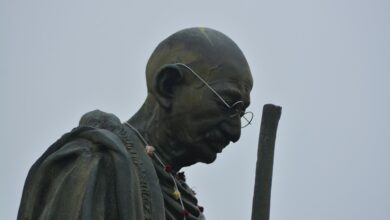A year in turmoil & Tagore’s first visit to Shillong

By Malabika Bisharad
In October 1919, Nobel laureate Rabindranath Tagore visited Shillong for the first time and stayed at Brookside. It was a momentous occasion no doubt, but the hill city could not give a fitting welcome to the bard.
The reason may be the prevalent situation across the country. After its success in World War I, the British government came down hard on leaders of the Indian National Congress. The infamous Rowlatt Act also came into being in the same year. Tagore was a critic of the act. He even went to the extent of denouncing Knighthood on May 31, 1919, as a fallout of the Jallianwala Bagh massacre on April 13, 1919.
As per the official record, 379 innocent people were killed and 1,200 were injured as the British army opened indiscriminate fire. The poet was shocked. He immediately sent Prof. C.F Andrews from Santiniketan to Mahatma Gandhi with the proposal to visit that grievous spot in Punjab. The Mahatma did not agree. He commented, “I don’t want to embarrass the Government now.”
Tagore rushed to Calcutta from Santiniketan and met Deshbandhu Chittaranjan Das, the Congress leader, with the proposal to arrange a public meeting in protest against the heinous act of the British government. But none agreed.
In Rabi Jeeboni, biographer Prasanta Kumar Paul wrote, “When the vigour and virility of entire India came down to zero point and took the role of a mum eunuch for fear of severe punishment (from the British Government) , a bold voice roared from a poet of Bengal….”
Tagore wrote a strong letter to Viceroy Lord Chelmsford denouncing ‘Knighthood’. Excerpts from the letter:
Your Excellency,
The enormity of the measures taken by the Government in the Punjab for quelling some local disturbances has, with a rude shock, reveiled to our minds the helplessness of our position as British subject in India. The disproportionate severity of the punishments inflicted upon the unfortunate people and the methods of carrying them out, we are convinced are without parallel in the history of civilized governments, barring some conspicuous exceptions, recent and remote.
…..
The accounts of insults and sufferings undergone by our brothers in the Punjab have trickled through the gagged silence, reaching every corner of India, and the universal agony of indignation roused in the hearts of our people has been ignored by our rulers, possibly congratulating themselves for imparting what they imagine as salutary lessons. This callousness has been praised by most of the Anglo – Indian papers, which have in some cases gone to the brutal length of making fun of our sufferings, without receiving the least check from the same authority, relentlessly careful in smothering every cry of pain and expression of judgement from the organs representing the sufferers.
…..
The time has come when badges of honour make our shame glaring in their incongruous context of humiliation and I for my part wish to stand shorn of all special distinctions, by the side of those of my countrymen, who, for their so called insignificance, are liable to suffer a degradation not fit for human beings. And these are the reasons which have painfully compelled me to ask Your Excellency, with due deference and regret, to relieve me of my title of Knighthood, which I had the honour to accept from His Majesty the king at the hands of your predecessor for whose nobleness of heart I still entertain great admiration.
Yours faithfully,
Rabindranath Tagore
The letter was published in The Statesman on June 2, 1919, under the caption, ‘Honour Unwanted’, and almost all the leading newspapers of India and abroad. There was a massive repercussion.
Amal Hom, the editor of Calcutta Municipal Gazette, wrote, “From Mr Andrews, I heard that when Tagore showed him the letter on 30th May [31st May] before disposal, Andrews requested him to make the wordings of the letter a bit softer, but Tagore frowned at him so bitterly that he could not utter any more words. In his words, ‘Such a look as I had never seen in the eyes of Gurudev before and after!’”
When Tagore came to Shillong in October of the same year, Shillong was then the capital of Assam Province. ND Beatson Bell was then the Governor of Assam Province. Shillong was under the strict administration of British Government. It was true that the English Government did not pay tribute to or felicitate Tagore as he denounced the Knighthood. The government service holders also could not felicitate him due to the same reason. Tagore did not like this attitude. It was the same in 1923 and 1927. In the later part of his life, Tagore wrote to Hemlata Devi on April 30, 1938, “In comparison to Shillong, the environment here (Kalimpong) is quite free from the supremacy of the office assistants and their masters. The alarming and astounding noise of the chariots of Indian rulers does not sound…”
Many residents of Shillong who really loved and respected Tagore visited him at Brookside in October 1919.
But the lukewarm response did not deter the bard from establishing an immediate bond of love and admiration for this wonderful city. Shillong’s beauty captivated Tagore forever. The poet laureate penned several poems, songs etc during his visits to the hill city.
Shall we pay Tagore due respect by preserving his memorials and memories in Shillong? That is the big question as we have already lost Solomon Villa. The heritage Jitbhoomi bungalow is now under private ownership and Brookside is under the ownership of the State Government of Meghalaya. Let us look forward for the best!




